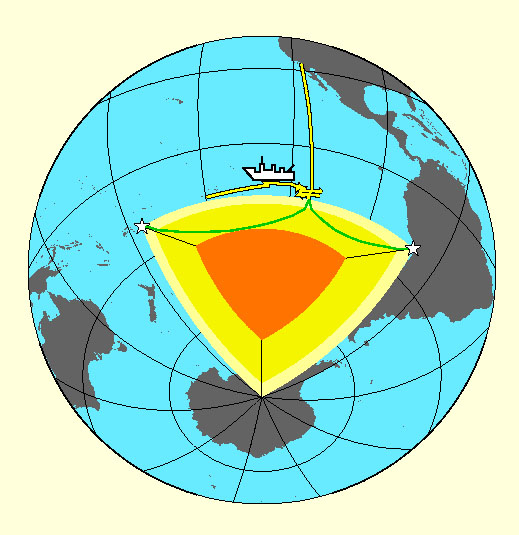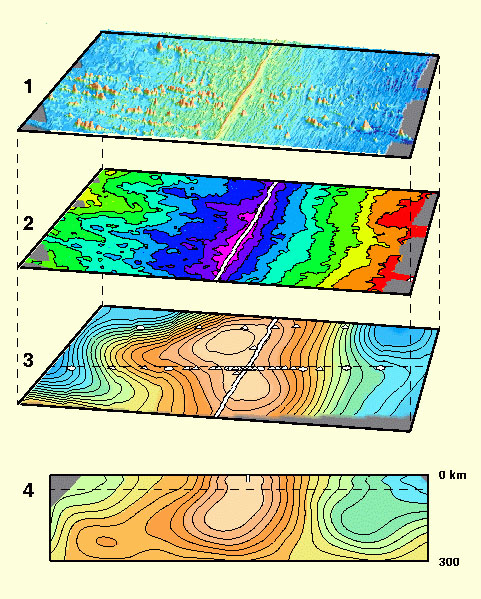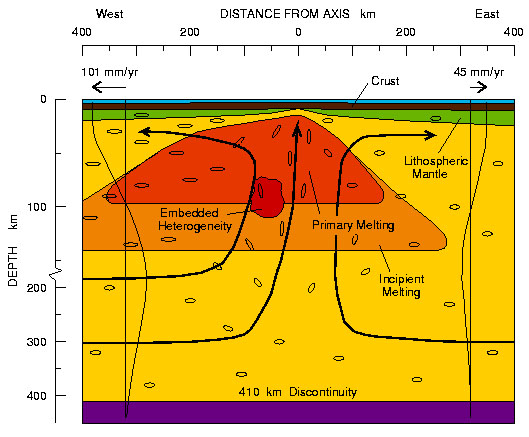In the South Pacific, the separating seafloor guides the underground process that forms new crust, researchers report in the May 22 issue of Science magazine.
This diagram shows a deep cross section of the ridge known as the East Pacific rise. Here, the Pacific and Nazca plates are pulling apart faster than most other plate separations on the planet. It is one of the most volcanically active regions on Earth. The Pacific plate rushes westward at 101 millimeters a year, about as fast as the average man's beard grows. To the east, the Nazca plate moves at about 45 millimeters a year, a little faster than the average fingernail grows.
The separating plates release pressure in the mantle, causing the rock below to rise, melt into magma and percolate up to fill the gap. The melting process begins as deep as 100 miles (about 200 kilometers), although most melting occurs at less than 60 miles down. The dark orange and red areas show the melt zones, including areas with unusual temperatures or composition labeled "embedded heterogeneity." The black lines with arrows show the upwelling pattern suggested by seismic waves that found aligned crystals in the upper mantle.
Illustration courtesy of Donald Forsyth/Brown University/Copyright ©1998Science magazine
Return to news release 97-129.


